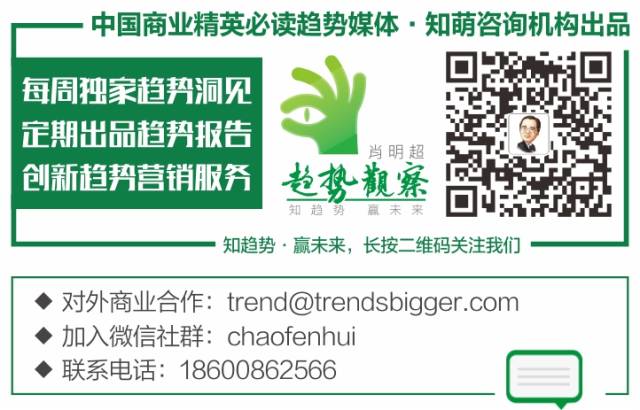
From a peak of popularity to becoming a “disaster zone” under industry criticism, the “reputation” of the programmatic industry has faced significant challenges in the past two years. However, unlike its reputation, the market size of the programmatic industry has not shown a rapid decline; instead, after undergoing a phase of wild growth and a reshuffle, the programmatic industry seems to be returning to the right track, entering a new phase of healthy growth.
According to an eMarketer report, in the past year of 2017, China’s programmatic advertising spending reached $16.74 billion, with a staggering growth rate of 51.5% despite a saturated market, accounting for 58.0% of China’s online display advertising spending.
“Survival of the Fittest” Becomes the Main Theme of the Programmatic Industry
Survival of the fittest is an unbreakable truth in the development of every industry, and the programmatic industry is no exception, especially in the DSP field.
Today, advertisers have increasingly higher standards for traffic quality, transparency in ad placements, and brand safety. They are no longer satisfied with basic KPIs like clicks and conversions; more refined metrics such as TA% concentration and frequency are gradually gaining importance among advertisers, which raises the technical and service requirements for DSP platforms. As a result, most DSP platforms that operate as “black boxes” or are “fake” or “white-label” have been eliminated first.

Moreover, as leading media such as BAT have gradually established their own DSP platforms, the “advantage” of independent DSPs in terms of resources has further been squeezed. Consequently, another group of “inadaptable” DSP companies has been forced to seek transformation. For instance, some DSP platforms have chosen to explore upstream in the industry chain closer to advertisers, moving towards a Trading Desk model. Others have actively aligned themselves with internet giants, advertisers, or agencies, either being acquired and restructured or moving towards in-house solutions, becoming proprietary tools for advertisers and departing from the independent DSP camp.
In TOP’s view, whether these companies are eliminated or forced to transform, it is beneficial for the independent DSP industry to reconstruct market competition rules and return to the “original intention” of improving efficiency and reducing costs. Previously, the phenomenon of “bad money driving out good” often occurred in the DSP industry, but after the adjustments of the “reshuffle period”, a more benign and fair environment will promote the programmatic industry into a new stable growth phase.
“Adapt or Perish” May Lead to an Oligopoly Era
Just as the sands of time wash away, some companies are eliminated while others grow stronger.
Looking back at those DSP platforms that maintained an upward trend during the “elimination period”, TOP has found that they share many similar characteristics.
First, they possess strong traffic integration capabilities.Today, programmatic buying has gained widespread recognition in the industry. With the emergence of private programmatic buying models such as PDB and PD, programmatic buying is no longer just focused on mid to long-tail traffic; increasingly scarce high-quality advertising resources have become the focal point of competition. Therefore, we can see that mainstream DSPs are now targeting upstream traffic, attempting to acquire more Hero-level high-quality traffic resources to continuously meet advertisers’ growing demand for quality traffic.

However, traffic integration capabilities are not only reflected in the quality and quantity of traffic but also need to form a differentiated advantage of “what others do not have”. For instance, the recently emerging OTT, with its strong exposure, high impact, and low interference, has formed a unique “living room economy”. Therefore, breaking the homogenized media format, OTT large-screen advertising resources have become the “darling” of advertisers. In terms of OTT coverage, independent DSP platforms like Youyi Huitong have already begun to layout, not only mastering media-side OTT advertising resources but also core resources of manufacturers’ OTT ads, achieving integration across OTT, video, and mobile screens, which has made comprehensive multi-screen resource coverage the top choice for many advertisers.
Secondly, they have comprehensive technical service capabilities.In the past two years, due to the lack of transparency in transactions within the programmatic industry, negative incidents have frequently occurred, prompting advertisers and agencies to seek more “control”. This has led to stricter standards for DSP platforms regarding data accumulation, monitoring capabilities, and anti-fraud capabilities. At the same time, they have raised higher demands for technical product support media strategies and planning services, especially in today’s increasingly fragmented environment. The cross-screen integration capabilities of DSP platforms will directly determine whether they can effectively cover target audiences and build scenario-based marketing strategies around user trajectories. Therefore, choosing a DSP platform that can achieve multi-screen coverage and provide one-stop cross-screen marketing services has become the common choice for most advertisers and agencies.
Third, they have a keen market sense..According to an iResearch report, as internet users and channels continue to penetrate deeper, local and small-to-medium advertisers will become a new growth point among the demand side of the programmatic buying market.
However, in actual placements, most small and medium enterprises often struggle due to a lack of experience and professional guidance, preventing them from fully unlocking the marketing value brought by programmatic buying, thereby affecting the advertising effectiveness itself. Therefore, some DSP platforms, upon noticing this pain point, have launched self-service advertising platforms targeted at small and medium enterprises, customizing development and optimization. For example, the You+ platform not only simplifies the usage process for small and medium enterprises but also enables intelligent recommendations by industry, reasonable user classification, and automatic matching of optimal placement strategies, addressing many of the strategy and optimization issues that small and medium enterprises face.

As the programmatic market develops towards a healthier and more stable state, the notion that “DSP is dead” is gradually fading. Moreover, leveraging emerging technologies such as AI, blockchain, and cloud computing, the DSP industry is advancing towards the expected direction of “transparency” and “intelligence”. It is foreseeable that during this process, the brutal market competition and elimination will continue, possibly becoming even more intense than before. DSP platforms aiming to stand out in such an environment not only need to grasp marketing trends and understand advertisers’ pain points but, more importantly, must dare to drive industry transformation through new technologies, reshaping advertisers’ confidence and industry rules, bringing programmatic buying back to the initial track of solving efficiency.
(Source: Topmarketing)
